Ways to cope with the urge to self-harm
When you want to self-harm, it can be hard to focus on anything else or to think about other ways to cope. Especially if you've self-harmed for a long time.
With time and practice, you can find other ways to cope with your feelings.
Some of the strategies on this page might not work for you. Or you might find that different things work for you at different times. That's okay. Only try what you feel comfortable with.
Remember: any way of delaying or distracting yourself from the urge to self-harm should be celebrated.
Contents
Jump to page information on:
Different techniques work at different times – just because something didn't work once doesn't mean it won't work again.
Tips on distracting yourself and replacing the self-harm
There are things you can do to distract yourself from the urge to self-harm, or to replace the self-harm with something else.
What works for you will depend on how you're feeling and why you want to self-harm. For this reason, we have tips for dealing with different emotions. We also have some tips from young people about what works for them.
If you feel angry
You could try:
- Hitting cushions
- Shouting
- Running or other exercise
- Squeezing a stress ball
- Tearing up paper
If you feel sad or scared
You could try:
- Listening to calming music
- Crying
- Sleeping
- Using a heavy or weighted blanket
- Spending time outside
- Finding strength or support in a faith or belief system
You could also try a breathing exercise to help yourself feel calmer:
- Try breathing in through your nose for 4 counts
- Hold your breath for 2 counts
- Breathe out through your mouth for 7 counts
If you want to feel in control
You could try:
- Tidying up your room or bag
- Writing lists
- Writing a letter saying everything you're feeling, then tearing it up
[I wrote down] every thought I had, no matter how uncomfortable it felt, and I would tear it up.
If you feel overwhelmed or numb
You could try:
- Holding or rubbing ice cubes on your skin
- Smelling something strong, like essential oils or foods
- Watching funny videos on YouTube or TikTok
You could also try a grounding exercise using the steps below. Focus on what's going on around you and then try to name:
- 5 things you can see
- 4 things you can feel
- 3 things you can hear
- 2 things you can smell
- 1 thing you can taste
I used an elastic band to fling my wrist instead of self-harming; I also used to draw on where I wanted to harm myself.
If you feel alone
You could try:
- Calling a friend
- Calling a helpline
- Asking to spend time with people you live with
- Helping someone else
- Going somewhere public and safe, like a park
I coped by forcing myself to go for walks with my friends or cousins, or calling my boyfriend.
If you feel ashamed
You could try:
- Reminding yourself that failure is okay, and everyone makes mistakes
- Spending less time with people who are unkind
- Spending more time with those who really care about you
If you feel like you don't like yourself
You could try:
- Being creative to express how you feel about yourself, like through singing, dancing or drawing.
- Writing a letter to yourself – first being honest about how you feel about yourself, then writing a reply filled with kindness and acceptance, as if you were writing to a friend.
- Finding a pose in the mirror that makes you feel strong.
Tips from other young people
- Get rid of things that you can use to self-harm
- Change the physical space you're in
- Self-soothe
- Do something to look after yourself
- Do something you enjoy
- Notice what does and doesn't help you
- Avoid talking if it will make you feel worse
The quotes below correspond to each of the tips from young people we spoke to:
Giving stuff in my room to my parents is helpful.
I try to get out of the space I'm in.
I have a little box full of calming things, like fidget toys and essential oils.
One of the biggest things is forcing yourself to do things that you know will benefit you, like having a shower.
Usually when I'm going through a rough time and feeling the urge, I do something that I enjoy, like listening to inspirational music.
Not all these things will work for everyone. If your form of self-harm is under-eating or over exercising, running won't be a good idea.
The more I talked about it, the more frequently the urges would come and it dragged me back in. I tried to talk to friends about more healthy things so I could feel like my old self again.
Tips for delaying self-harm
Instead of trying to replace self-harm with something else, you could try to delay self-harming. This can feel really hard, so try to start with a small amount of time before building up to longer delays.
For example, you could start by trying to wait 30 seconds before you self-harm. If you can do this, next try waiting for a couple of minutes, and then slowly increase the time you wait.
Some people call this ‘riding the wave’, as the urge to self-harm can rise and fall like a wave.
Keep a journal to help track your mood and when you feel the lowest.
Some mobile apps can support you by providing activities for you to manage the urge to self-harm, as well as ways to track your progress. Some of these apps can also be made private so no-one else can see what you save.
Accept the feelings behind the self-harm
This could be in a safe space with a counsellor or with another trusted adult.
Understand your self-harm
Write down what triggers or causes you to self-harm over a set period of time, like a month or 2. You could think about what you were doing, where you were and what you felt before you self-harmed.
You could then think of ways to avoid or change those situations in the future.
Reach out for support
This can feel really scary, especially if you're worried that people won't understand or might judge you. But opening up is often the first step to getting the help and support that you need.
Find advice on this in our section about telling someone you're self-harming.
Just because your injuries aren't so severe you need urgent medical help, that doesn't mean you don't need help.
Create a safety plan
This could list:
- Signs that mean you might be close to self-harming
- Some coping strategies you find helpful
- How family or friends can support you and get you extra help to stay safe
- Contact details of your doctor or crisis team
Once you've made the plan, you can keep it somewhere easily accessible, like your bag, purse or wallet.
Counsellor
Counsellors listen to you and give you a safe space to explore how you’re thinking, feeling and behaving. They also help you find ways to cope with things.
Visit our full treatment and support glossaryThis information was published in June 2021. We will revise it in 2024.
The quotes on this page are from young people we spoke to while making this information. They've given us their consent to use their quotes in our information. The words, experiences and opinions in the quotes are not related to the young people shown in any of the photographs we use.
References are available on request. If you would like to reproduce any of this information, see our page on permissions and licensing.














